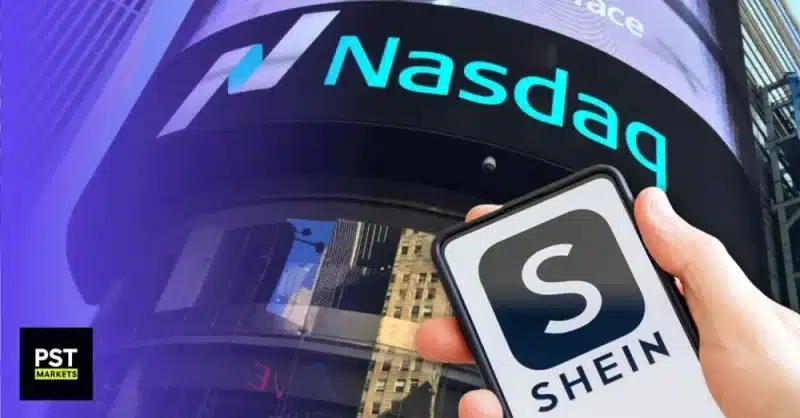One of Wall Street’s worst kept secrets may not be a secret anymore. After Chinese media reported on the matter, the Wall Street Journal confirmed that fast fashion retail giant Shein has “secretly” filed for its long awaited IPO. Investors were tipped off about the Shein stock IPO thanks to Shein’s efforts to change perceptions about its business practices by publicly addressing a range of criticisms from consumers and politicians this year. Up till this point, the company had been pretty tight lipped so this openness marked a huge change in tone.
Despite this, some investors are wary of Shein due to the CCP’s potential impact on its business – a huge risk since Shein is mainly dependent on Chinese suppliers.
The CCP’s Impact on the Shein IPO
By now, many investors are still smarting from the CCP’s impact on Chinese stocks following the government’s crackdown on the tech sector. Alibaba was the first impacted by the CCP when the Chinese government started a probe into Alibaba’s alleged abuse of its market dominance. Eventually, Alibaba was slapped with a $2.8 billion fine and overall, Alibaba stock is down 70% since the Chinese government launched its investigation.
But Alibaba wasn’t the only one impacted by the CCP. In fact, what happened to Alibaba was just part of the Chinese government’s tech crackdown to assert dominance over these companies.
For instance, Chinese tech ridesharing company Didi was also impacted by the CCP when it challenged its authority and went through with its listing on the New York Stock Exchange. This provoked the Chinese government which launched an investigation just days after its IPO, ultimately preventing Didi from registering new users. Needless to say, Didi tanked on the news and was down 57% from its IPO price on the day its shares were delisted from the New York Stock Exchange.
Now investors are wondering if the same thing could happen to Shein when it IPOs. While the CCP does present some cause for concern, Shein is in a very different position thanks to its decision to move its headquarters to Singapore and it also deregistered its original company in China back in 2021. Still, Shein is dependent on Chinese suppliers which means its not immune to the CCP’s policies.
This risk and investors’ painful history with Chinese stocks could hurt Shein stock when the company IPOs. But Shein will face other hurdles too. To understand the risk and opportunity Shein stock may present, investors should first look into Shein’s history for the full picture.
Shein Background
Shein was founded in China in 2008 by Chris Xu. And at the time, Shein had no involvement in the design or production of the clothes it sold. It was basically a drop shipping company that sold items from third party wholesalers directly to customers all over the world.
But that changed in 2012. At the time, Shein launched its current website and started using social media marketing by collaborating with fashion bloggers for giveaways and advertising items on Facebook, Instagram, and Pinterest.
Shein also started to establish its own supply chain system and in 2014, Shein acquired Romwe, a Chinese e-commerce retailer. This acquisition and its strategic changes transformed Shein from a drop shipping company into a fully integrated retailer.
By 2016, Shein had a team of 800 designers and prototype makers to manufacture Shein branded clothes. Just three years later, Shein’s clothes were being featured on daytime TV shows in the US and in online businesses like Fashion Nova and Zaful.
Shein’s Rise to Fast Fashion Dominance
Shein’s success is attributed to its successful marketing efforts. Because Shein is known for its dirt cheap prices, people are willing to buy them even if its clothes are low quality. As a result, it became very popular among Gen Z customers who prefer buying less expensive clothes. To get more customers from this segment, Shein focused all of its marketing efforts on what they constantly use – social media.
Shein was an early adopter of TikTok as a promotional tool. Remember that TikTok trend of influencers presenting their “haul” of clothes from Shein? That played a big role in driving customers to Shein’s website. In fact, Shein’s app downloads surpassed those of Amazon in 2021, before it became the most downloaded app in 2022.
However downloads don’t necessarily translate to purchases. Which is why Shein stimulated demand through not only its cheap prices but with rewards for shopping too. These discounts are only applied to customer’s next shopping trip, incentivizing them to come back for more.
Shein’s AI Genius
But the real secret to Shein’s success is its use of AI to identify trends combined with its factories’ ability to pump out clothes before any of its other fast fashion competitors. For instance, if Taylor Swift is photographed wearing a brand new dress and customers begin searching for it on the Shein app, then Shein can easily produce a cheap version of it in less than a few of weeks.
Its ability to combine tech and manufacturing to make cheap appealing clothes gives Shein a very compelling moat and the results speak for themselves. Shein has almost 50% market share of the US fast fashion market and is expanding elsewhere too.
That’s why Shein was able to generate $24 billion in revenue and $800 million in net proft in 2022 which is almost as much as established retailers like Zara and H&M. The company also achieved record revenue and income for the first 3 quarters of 2023. So after this huge success in the fast fashion market, Shein is now branching out. It appears Shein may even be planning to go head to head with Amazon one day by capitalizing on its business model’s unique edge.
While Amazon has an impressive hold on the e-commerce market, Shein has an advantage. It deals with manufacturers directly so the product moves from the manufacturer to Shein and then to the customer. Whereas with Amazon, products travel from the manufacturer to a third party then to Amazon before reaching the customer.
By eliminating the third party from the whole process, Shein has pricing power. But this also comes with its own downside since Shein assumes the risk when negotiating for large quantities at very cheap prices before marking up the prices for consumers.
Shein Stock IPO
Now Shein’s business goal is to amass more customers and maintain its reputation as the cheapest online retailer. So like all successful private companies, Shein now wants to go public and it’s already working with Goldman Sachs, JPMorgan Chase, and Morgan Stanely as underwriters for its highly anticipated IPO.
Last year, Shein was valued at $100 billion in a fundraising round. However that valuation has reportedly dropped to between $50 and $60 billion due to higher interest rates and market uncertainty. This hasn’t stopped Shein from shooting for the moon,
People familiar with the matter told Bloomberg that it hopes to get a valuation between $80 and $90 billion which would make it one of the largest IPOs ever.
However, for the last few years the IPO market has been sluggish. Much anticipated IPOs like Klaviyo and Arm were bad performers until the latest CPI print, which helped rejuvenate the market. Since the then, both Klaviyo and Arm have risen above their IPO prices – bringing hope that the IPO market will rebound in 2024.
When is the Shein Stock IPO?
According to the Wall Street Journal’s sources, the Shein stock IPO could happen as soon as 2024.
Will the Shein stock IPO be successful?
Looking at Shein’s investor base, the outlook for Shein’s IPO appears bullish. Here’s why…
Aside from its strong fundamentals, one of Shein’s largest investors is the Chinese arm of Sequoia Capital. Sequoia is a renowned VC firm with a track record stretching across 51 years. Its invested in countless private companies that went on to have successful IPOs, and with $85 billion in assets under management, investors appear to have confidence in Sequoia’s picks.
Not to mention, Sequoia’s investments have included several unicorns like:
- Apple IPO’d in 1980 with a market cap of $1.8 billion and is now valued at $3 trillion.
- Cisco IPO’d in 1990 at a $224 million valuation and now has a market cap of $195.6 billion.
- Google IPO’d in 2004 at a valuation of $23 billion. Now Google is a trillion dollar company.
- Nvidia IPO’d in 1999 at a valuation of $625 million and has reached more than $1 trillion now.
- Airbnb IPO’d in 2020 at a $47 billion valuation and now has a market cap of $85.5 billion
- Palo Alto Networks IPO’d in 2012 at a valuation of $2.8 billion and is now valued at nearly $88 billion.
- Snowflake IPO’d in 2020 at $120 per share and is currently at almost $172. So Snowflake could be considered disappointing compared to Sequoia’s other investments. But it still provided investors with a sturdy 47.5% gain from its IPO price.
Now some might point out that these companies are American, so the results may differ with Shein but that’s not quite the case. Sequoia already has several successful Chinese investments and was actually the most prominent VC investor in Alibaba.
Alibaba went public in 2014 at $68 per share and then went on to reach a peak of $320 in late 2020. However, Alibaba’s stock lost most of its gains following China’s tech crackdown and is currently trading around $72 which is still higher than its IPO price.
Shein Stock Forecast
Considering Sequoia’s solid track record in backing successful IPOs, Sequoia’s confidence in Shein as one of it’s largest backers makes it very likely Shein’s IPO will be yet another Sequoia success story. After all, Shein has a very attractive moat and its business model has already proven successful.
But this does not assure a successful IPO. Shein will have to contend with investors fears of CCP interference and a still thawing IPO market in the US. The company’s reliance on Chinese suppliers could also prove to be its Achilles heel not only leading up to its IPO but far into the future. These factors will no doubt determine whether the Shein stock IPO is as successful as the company hoping.
Disclaimer
Please visit and read our disclaimer here.









